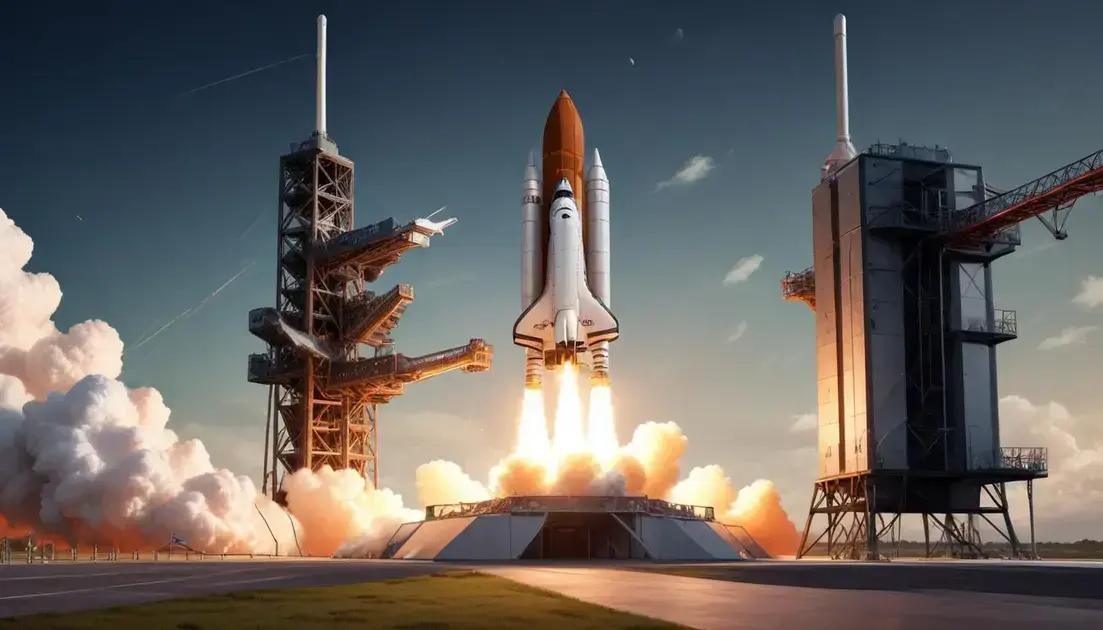
Rosetta Mission: The Incredible Landing of the Philae Probe on a Comet
The Rosetta Mission has significantly advanced our understanding of comets, particularly through the successful landing of the Philae Probe on comet 67P. This mission revealed vital data about comet composition, organic molecules, and surface characteristics, which could shed light on the origins of the solar system and life on Earth. Furthermore, Roetta demonstrated the power of international collaboration in space exploration, setting a precedent for future missions and innovations in space technology.
Have you ever wondered about the daring feats of space exploration? The Rosetta Mission marked a significant milestone in our quest to understand comets and the universe. Join us as we delve into this incredible story!
The significance of the Rosetta Mission
The Rosetta Mission was a game-changer in space exploration. Launched in 2004, it took over a decade to reach its destination. This mission helped us learn more about comets, which are like time capsules from the early solar system.
Understanding Comets
Comets are made of ice, dust, and rocky materials. They carry clues about the solar system’s formation. The Rosetta Mission studied one specific comet called 67P/Churyumov–Gerasimenko. This comet has a unique shape and surface, which made it interesting to scientists.
First Soft Landing on a Comet
Rosetta’s lander, Philae, made history by being the first to touch down on a comet. Although it bounced a bit, it collected important data. Philae sent back information about the comet’s surface and atmosphere.
Impact on Future Missions
The success of the Rosetta Mission shows what we can achieve in space. It paves the way for future missions to comets and other celestial bodies. Scientists are excited about the data retrieved. It changes how we view our solar system and beyond.
Overall, the Rosetta Mission is a milestone in our quest for knowledge about the universe. Its discoveries and achievements teach us more about where we come from and where we might be headed.
Challenges faced by the Philae Probe
The Philae Probe faced several challenges during its historic landing on comet 67P. One major issue was its unexpected bounce after touching the surface. Instead of settling down gently, it bounced several times. It finally landed in a shadowed area, which made solar energy collection difficult.
Power Issues
Philae needed sunlight to charge its batteries. However, its position prevented it from getting enough light. This limited its operational time. Engineers had to plan carefully to maximize the data collected within the available power.
Communication Problems
Another challenge was maintaining communication with Rosetta, which acted as a relay. The probe’s position affected radio signals. Sometimes, signals were weak or unclear. This made it tough to receive data and send commands.
Operational Constraints
Philae was designed for a short mission, but its unexpected bounce changed that. Engineers had to adjust the mission objectives. They prioritized key experiments to gather vital information before power ran out.
Despite these hurdles, Philae collected valuable data about the comet’s surface and environment. Its findings are crucial for understanding comets and the origins of our solar system.
Key data transmitted from the comet
During its mission, the Philae Probe transmitted key data that taught us a lot about comet 67P. One of the first discoveries was the comet’s surface structure. The probe revealed that the surface is covered with a mix of dust and ice. This combination is essential for understanding the comet’s history.
Organic Molecules
Philae also detected organic molecules. These are the building blocks of life. Finding them on a comet is exciting because it suggests comets might have played a role in delivering life to Earth.
Surface Temperature
The probe measured surface temperatures too. It found that the temperature fluctuates widely. Understanding these changes helps scientists learn about the comet’s environment and activity.
Solar Energy Absorption
Another important finding was how much sunlight the comet absorbs. Philae’s instruments measured the comet’s reflectivity. This data is key for future missions to understand how comets behave as they get closer to the sun.
These discoveries help scientists piece together how comets form and evolve. The information collected by Philae is vital for understanding the early solar system and what it can tell us about the origins of our planet.
The impact of this mission on space exploration
The Rosetta Mission had a huge impact on space exploration. It showed us what is possible when we explore comets. This mission inspired new interest in studying these ancient travelers. It helped scientists understand how comets can tell us about the solar system’s history.
Advancing Technology
Rosetta pushed the boundaries of technology. The mission required advanced instruments to study the comet up close. These tools are now being used in other space missions, improving our ability to explore.
Global Collaboration
The mission also highlighted the power of teamwork. Scientists from different countries worked together. This collaboration set a strong example for future space missions.
New Questions and Discoveries
Rosetta raised new questions about comets and their role in our solar system. It changed how we think about how life on Earth may have begun. Understanding comets can lead to better insights about the building blocks of life.
Overall, the mission paved the way for future research. It opened doors for more in-depth studies of other comets and celestial bodies. The knowledge gained from Rosetta will guide the next generation of explorers in understanding our universe better.
Conclusion
In conclusion, the Rosetta Mission has greatly expanded our understanding of comets and the early solar system. By successfully landing the Philae Probe on a comet, we learned valuable lessons about these mysterious bodies. The data collected during this mission has opened up new avenues for research and exploration.
Moreover, the mission has inspired future generations of scientists to continue pushing boundaries in space exploration. As we dive deeper into the cosmos, discoveries like those from Rosetta remind us of the importance of curiosity and collaboration in unraveling the universe’s secrets.
Ultimately, the impact of the Rosetta Mission is far-reaching. It stands as a testament to human ingenuity and our quest for knowledge, encouraging us to look beyond our planet and understand our place in the cosmos.


